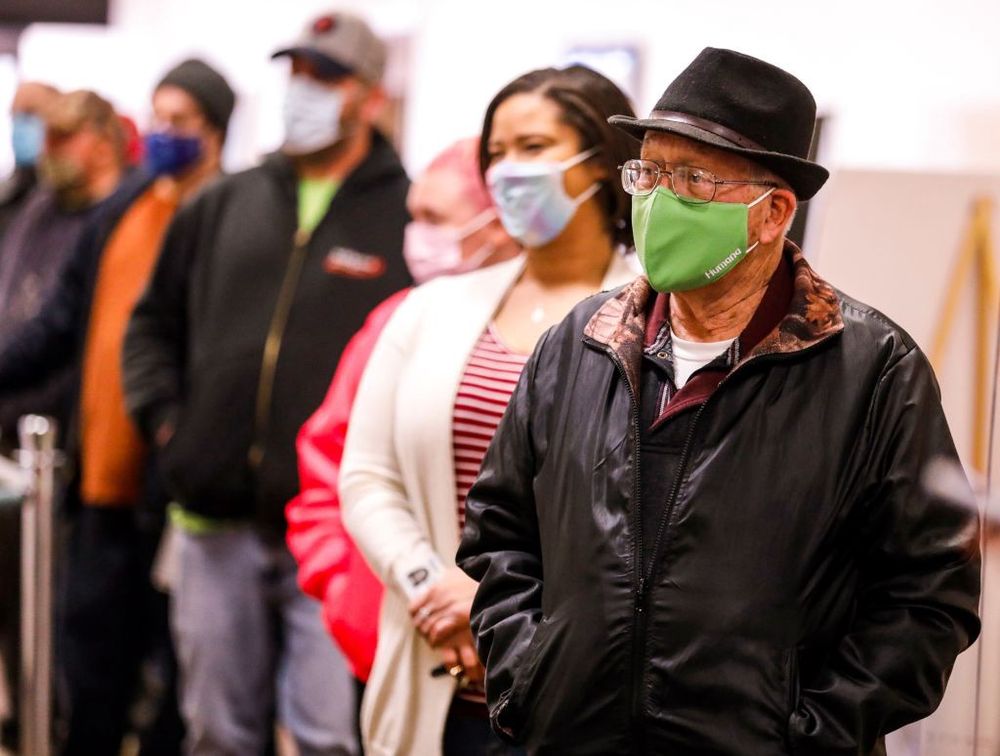On Tuesday night, just like any other Election Day since the advent of the touchscreen, news outlets were inundated with interactive U.S. maps. Shades of static blues and harsh reds illuminating every state provided a stark image of a perceived two-sided ideological clash, the winner of which to determine the nation’s future. But this year, political discourse around the election is in a much more delicate state thanks in part to the coronavirus pandemic, public distrust of government, a nationwide movement against policing and systemic racism, and our data-driven anxieties.
Since Tuesday night, numbers and data visualizations representing the voting figures of certain demographics have poured into the public consciousness by the minute, delivered by breathless news broadcasters hyping up the prizefight with endless speculation and non-updates. But all of this drilling down exposed some American uglinesses — although folks seem to have fixated on the wrong one. People began to turn on fellow citizens, demonizing certain voting blocs based on their ballot tendencies. Yet while voting analysis can promote accountability (both on behalf of demographics and the appeals of each party), it’s only served to shroud the real issue: a system of oppressive political binaries.
Voting numbers within a politically narrow but contentious nation are a cruel calculus. As ballots in swing states continue to be tallied, the figures that deserve our attention — more than 230,000 Americans dead from Covid-19, 2.3 million incarcerated in American prisons and detention centers, 30 million uninsured Americans, and a wealth gap that’s only grown wider since the coronavirus hit — got very little play. Instead, we dug our heels into the dangerous narratives surrounding which voters have supported a particular presidential candidate.
Michigan residents were early enemies of the analytics. With ballots still outstanding, the state flashed red just long enough for boring bozos to knock Flint’s citizens’ six-year fight for clean water. Michigan’s overall vote swayed Democratic not long afterward, yet still, considering how flippantly the Democratic Party has addressed the deathly conditions there, weaponizing the voting numbers in that way served only to denigrate poor Black people struggling to make the choice of which political party will ignore them next.
The South has long faced similar scrutiny. While it’s clearly not a monolith, the region takes shit for consistently voting Republican regardless of all the Black radical work that regularly takes place in those states. In the case of Florida, a crucial battleground state that Trump seems to have secured once again, the voting breakdowns were instructive in holding White Cubans accountable (they’ve been voting within their own conservative interests since the 1970s). Sure, the Cuban American vote is important — and White Cubans should be called out for their history of anti-Blackness — but as of 2018, they only make up roughly 6% of Florida’s voting population. In fact, most Cubans nationwide identify as Republicans. There’s nothing special in the stew about Floridian Cubans as opposed to Cubans anywhere else.
Exit polls (which, again, don’t reflect the final count) thus far show that several race and gender demographics — save for, funny enough, White men — have increased their support for Trump.
Back in 2016, 52% of White women voted for Trump, a figure that thus far has risen by about 2% this year. It’s another wicked reminder of the limited scope of White feminism in the wake of historic hate and apathy, but it also deserves context. Exit polls (which, again, don’t reflect the final count) thus far show that several race and gender demographics — save for, funny enough, White men — have increased their support for Trump. So while the harangues against specific groups of people’s voting behavior may feel warranted, it must be placed within the scope of a rising tide of conservative politics.
But we also must remember that these numbers don’t tell us much of anything. More people voted in 2020, so it stands to reason that the percentages would shift to reflect that increase. If these patterns hold, however, as folks who recognize how rare it is that the leader of the American empire actually attempts to meet the basic needs of the people, we have to deal with the very real strategic implications for those seeking liberation. Regardless of who we voted for, there’s a consensus within both parties that Donald Trump and Joe Biden aren’t the most encouraging in terms of advocating for Black freedom.
We’re not done with the numbers and they’re not done with us. The election, as much as it seems to be in the hands of the Biden campaign as of now, will likely undergo many challenges from the right. From the president, a GOP-led Congress, and the Supreme Court on down. There’s more symbolic and literal political purgatory we must struggle through as a nation. It is that struggle — or as Dionne Brand wrote in July, the oncoming “narrative reckoning” of our politics — that can most immediately impact radical change.
Black people know full well the violence and dehumanization of measuring our lives through statistics, from slave schedules to the monolithic notion of a Black vote. How it flattens us into stereotypes, arrests our collective imaginations, and creates prisons housing all of the radical potential futures under the guise of returning to normalcy. It’s very easy to fall back into the realm of polemic discourse during election season. But the moment we point the finger at constituents — the moment we forget that this election process has proven easily corruptible, fungible by a few greedy men — that is the moment we let the numbers win.
